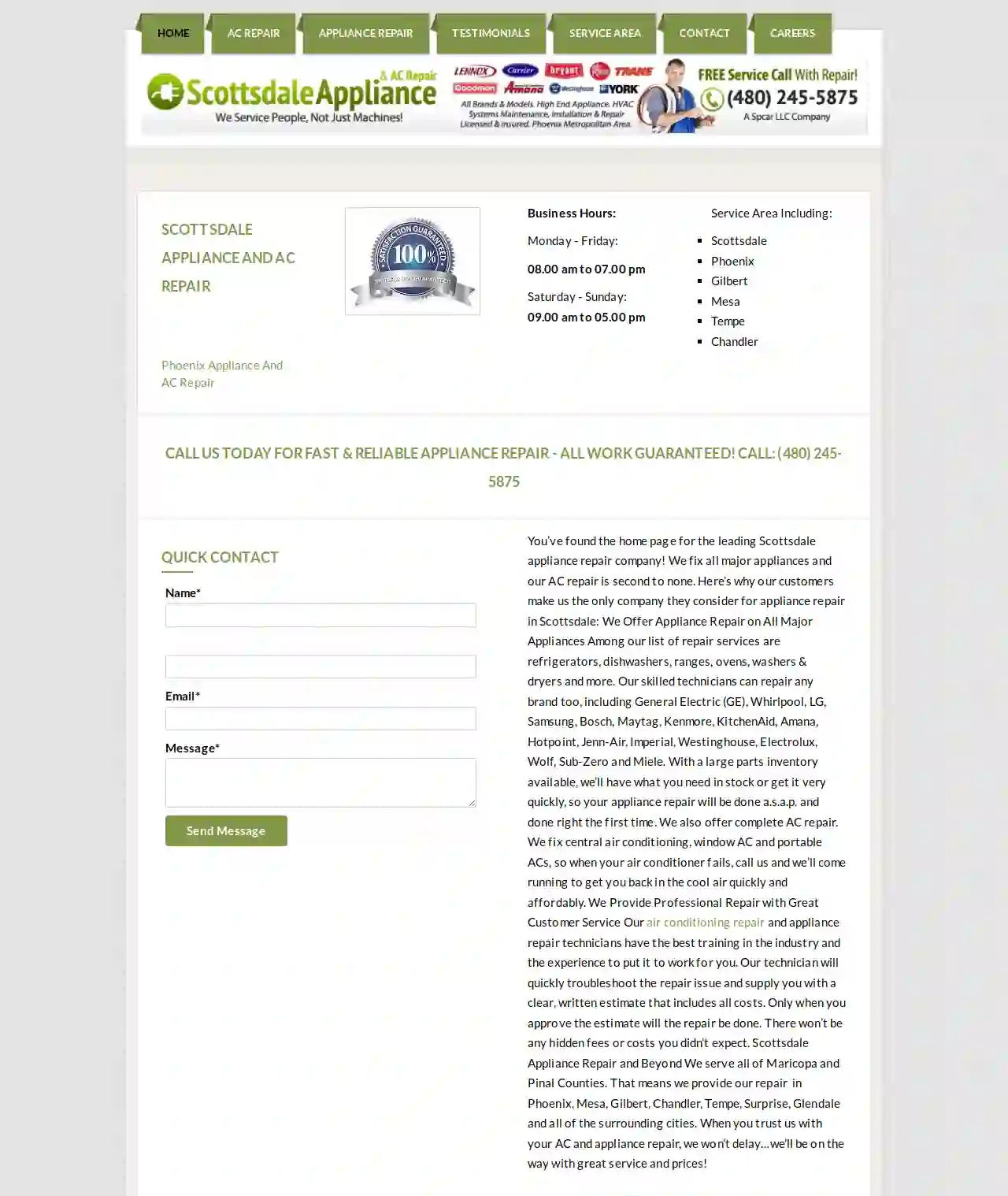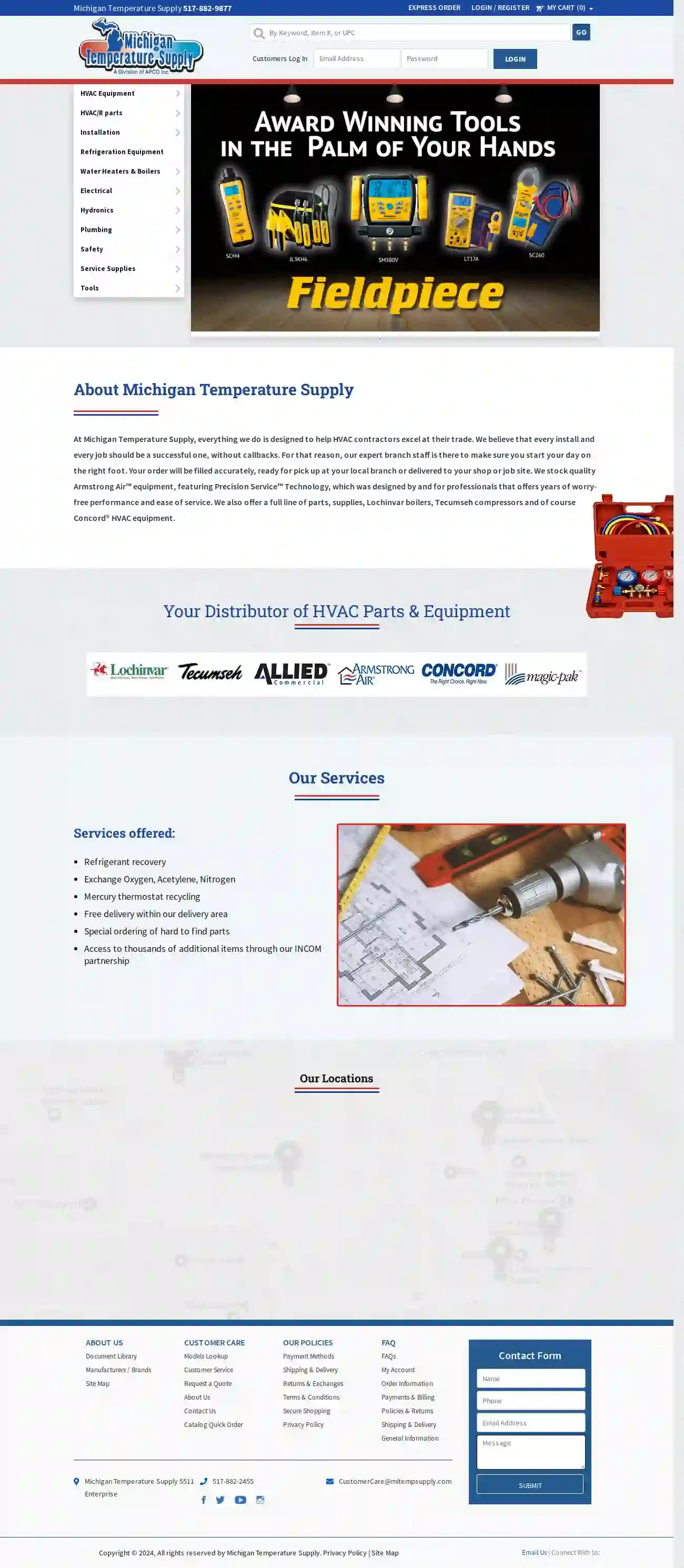Boiler Installation Maricopa
Find Boiler Installation in Maricopa
Get multiple Boiler Installation quotes for your project today! Compare profiles, reviews, accreditations, portfolio, etc... and choose the best offer.

Grizzly Mechanical Heating and Cooling
535 reviewsPhoenix, USGrizzly Mechanical is a family-owned and operated HVAC company serving the Peoria and West Valley areas of Phoenix, Arizona since 2012. We specialize in providing top-notch residential and commercial HVAC services, including installation, repair, and maintenance. Our team of experienced technicians is dedicated to ensuring your comfort and satisfaction with reliable, honest, and reasonably priced services. We offer a wide range of products from over 30 brands and stand behind our work with a 100% guarantee. Whether you need emergency AC repair or a new system installation, Grizzly Mechanical is here to help you stay cool and comfortable year-round.
- Services
- Why Us?
- Testimonials
- Gallery
Get Quote
One Hour Air Conditioning & Heating® of Tucson
4.6350 reviews123 Main St, Tucson, 85745, USOne Hour Air Conditioning & Heating of Tucson is a premier HVAC service provider in the United States. We respect our customers, their time, and the trust they put in us to keep their homes comfortable. We back all of our work with a 100% customer satisfaction guarantee for two years, and we're always on time - guaranteed. Our team of experts is dedicated to providing reliable heating and air conditioning systems that homeowners don't have to think about. We're here for you when you need us most, with 'round the clock availability and a commitment to StraightForward Pricing.
- Services
- Why Us?
- Accreditations
- Gallery
Get Quote
Simply The Best Heating And Cooling
4.4153 reviewsGilbert, USAt Simply the Best Heating & Cooling, we pride ourselves on offering a solution to any of your air conditioning or heating problems. That means being ready to handle anything and everything. Whether you need AC installation, furnace repair, or system maintenance, you can count on us for effective, affordable and lasting HVAC service in Gilbert AZ. We’re so confident that we will that we guarantee your satisfaction and will do everything in our power to make things right if you’re ever unhappy. Schedule high-quality repair, installation, or other HVAC service in Gilbert AZ by calling 480-361-8458 or contacting us online today! Get a Free Quote on a New HVAC System Today! Simply The Best High Quality HVAC Services From Your Daikin Comfort Pros Heating Services Air Conditioning Services Daikin Fit Installation Indoor Air Quality Services Ductless Mini Splits Other Services OUR SERVICE IS SIMPLY THE BEST Our Customers Think So Too! “As always these many years, we get the best customer service.” Kathy G. “We've been dealing with this company 10 years and have always been satisfied with their people and their services.” Thom Young “They are always on time, explain to me what they are doing, and warranty coverage on my AC unit has been great.” Jason Achee "My AC quit working at night, on a federal holiday which also happened to be a Sunday. Abel came out to fix it rather quickly with a smile on his face.” Brian H. "Was without a.c. four days a couple weeks ago, called 2 a.c. contractors with no response, called S.T.B and was put on call sched.” Bob M. Keep Your Home Or Business Comfortable! At Simply The Best Heating & Cooling, we pride ourselves on offering a solution to any of your air conditioning or heating problems. That means being ready to handle anything and everything. Whether you need AC installation, furnace repair, or system maintenance, you can count on us for effective, affordable and lasting HVAC service in Gilbert AZ. We’re so confident that we will that we guarantee your satisfaction and will do everything in our power to make things right if you’re ever unhappy. Schedule high-quality repair, installation, or other HVAC service in Gilbert AZ by calling 480-651-8089 or contacting us online today! View Coupons ABOUT OUR TEAM 0 Years in Business 0 + Satisfied Clients 0 Certified HVAC Pros A+ BBB Ranking We're Committed To Your Satisfaction Why should you choose Simply The Best Heating & Cooling? We have been BBB accredited since 2002 We are fully licensed, bonded, and insured for your protection All of our technicians are drug tested, background-checked, and professionally trained We offer straightforward pricing, and friendly financing Your satisfaction is 100% guaranteed! MORE ABOUT US SIMPLY THE RIGHT CHOICE Trained, Professional, Drug-Tested Technicians 1 Fair Pricing & Ethics - We Operate On Integrity 2 Free Estimates on all New Systems 3 OUR BLOG STAY INFORMED November 9, 2023 Debunking Heat Pump Myths and Embracing the Benefits in Arizona When it comes to staying comfortable in Arizona's scorching summers and chilly winters, homeowners often rely on traditional HVAC systems. However, there's an alternative that's been gaining popularity and is… October 5, 2023 Rising Energy Costs and High Efficiency Heat Pumps: A Smart Choice for Gilbert
- Services
- Why Us?
- Accreditations
- Testimonials
- Gallery
Get Quote
Air Boss, LLC.
426 reviewsShow Low, 85901, USAz. Cont. Lic.# ROC233699 CR-39 40 Years Experience LICENSED-BONDED-INSURED If you’re looking for expert cooling and heating contractors, look no further. That’s precisely what you’ll get when you hire the team at Air Boss, LLC.. We’re dedicated to using our knowledge, training, and experience to make sure your HVAC systems are always running smoothly. As one of the top heating and air conditioning companies in town, we’ll stop at nothing to make sure you’re delighted with our work. Our top priority is client satisfaction, and we’re very attentive to your needs as a result. Contact us now at (928) 537-5054 to learn more about us and why we’re the right fit for you. CALL NOW Air Boss, LLC.’s Top-Quality Heating Services As a team of fully trained and experienced professionals, we know all there is to know about HVAC units, and we understand the importance of quality work. Our highly trained heating and air conditioning contractors take their work seriously and stand proudly behind every completed job. We strive to always give it one hundred percent to make sure your HVAC work is done skillfully, efficiently, and on time. To achieve this aim, we only use the very best in tools, equipment, and materials. We also carry out a rigorous inspection following our work to ensure optimal performance before we consider our job done. Great work, reasonable prices, and friendly workers: it’s no wonder our clients say we’re the best of all HVAC companies around. Our Full-Service HVAC Company We believe our customers deserve the best, and that’s exactly what we deliver. With years of experience and a commitment to quality, we’re the perfect choice for all your HVAC needs. Contact us today to schedule your appointment and experience the Air Boss, LLC. difference for yourself. CALL NOW
- Services
- Why Us?
- Accreditations
- Gallery
Get Quote
Custom Climates HVAC
4.787 reviews88 Priscilla Lane Unit #5, Auburn, 03032, USAt Custom Climates HVAC, we are a leading HVAC located in Auburn, NH providing top-notch HVAC services to residents and businesses in the area. We are a Full-Service Heating and Cooling Company. Trusted by New Hampshire Families, Homes, and Businesses Since 2007. Get a Free Estimate Call (603) 262-1623 Special 25 Months @ 0% APR Financing! Subject to Credit Approval. Terms and Conditions Apply. Learn More How Customers Feel About Our Service We are a Full-Service Heating and Cooling Company. Trusted by New Hampshire Families, Homes, and Businesses Since 2007. Schedule Service Call (603) 262-1623
- Services
- Why Us?
- Gallery
Get Quote
Trane - Heating & Cooling Services
12 reviewsPeoria, USTrane is a leading provider of heating, ventilation, and air conditioning (HVAC) systems for residential and commercial buildings. With a rich history of innovation and a commitment to quality, Trane offers a wide range of products and services to meet the diverse needs of its customers. From traditional furnaces and air conditioners to cutting-edge heat pumps and smart thermostats, Trane has a solution for every home and business. The company's Trane Comfort Specialists are highly trained professionals who provide expert installation, maintenance, and repair services. Trane is dedicated to delivering exceptional comfort, energy efficiency, and peace of mind to its customers.
- Services
- Why Us?
- Accreditations
- Gallery
Get Quote
Scottsdale Appliance And AC Repair
4.484 reviews14700 N. Frank Lloyd Wright Blvd, Suite 157-328, Scottsdale, 85260, USYou've found the home page for the leading Scottsdale appliance repair company! We fix all major appliances and our AC repair is second to none. Here's why our customers make us the only company they consider for appliance repair in Scottsdale: We Offer Appliance Repair on All Major Appliances Among our list of repair services are refrigerators, dishwashers, ranges, ovens, washers & dryers and more. Our skilled technicians can repair any brand too, including General Electric (GE), Whirlpool, LG, Samsung, Bosch, Maytag, Kenmore, KitchenAid, Amana, Hotpoint, Jenn-Air, Imperial, Westinghouse, Electrolux, Wolf, Sub-Zero and Miele. With a large parts inventory available, we'll have what you need in stock or get it very quickly, so your appliance repair will be done a.s.a.p. and done right the first time. We also offer complete AC repair. We fix central air conditioning, window AC and portable ACs, so when your air conditioner fails, call us and we'll come running to get you back in the cool air quickly and affordably. We Provide Professional Repair with Great Customer Service Our air conditioning repair and appliance repair technicians have the best training in the industry and the experience to put it to work for you. Our technician will quickly troubleshoot the repair issue and supply you with a clear, written estimate that includes all costs. Only when you approve the estimate will the repair be done. There won't be any hidden fees or costs you didn't expect. Scottsdale Appliance Repair and Beyond We serve all of Maricopa and Pinal Counties. That means we provide our repair in Phoenix, Mesa, Gilbert, Chandler, Tempe, Surprise, Glendale and all of the surrounding cities. When you trust us with your AC and appliance repair, we won't delay...we'll be on the way with great service and prices!
- Services
- Why Us?
- Accreditations
- Our Team
- Testimonials
- Gallery
Get Quote
AC Hotel by Marriott Phoenix Downtown
4.2339 reviewsPhoenix, Arizona, USA, 414 North 5th Street, 85004, USWelcome to AC Hotel Phoenix Downtown, European-inspired hotel in the heart of downtown Phoenix. Discover a perfect blend of European style in the Southwest at the AC Hotel Phoenix Downtown. Conveniently situated in the heart of downtown Phoenix at the Arizona Center, our hotel is moments away from the Phoenix Convention Center, and attractions like Chase Field, Footprint Center, and Phoenix Art Museum. After a day in the city, take sanctuary in our modern guest rooms which feature plush beds, complimentary Wi-Fi, smart TVs, premium toiletries, and lavender satchels to ensure a good night’s rest. Begin the new day with our unique European-inspired breakfast at AC Kitchen, and join us later for tapas and cocktails at AC Lounge. A 24-hour fitness center with panoramic views will allow you to stay in-tune with your routine during your stay. Organize a business meeting or social gathering in one of our premier event spaces. Whether travelling for business or leisure, the AC Hotel Phoenix Downtown is an oasis that will allow you to enjoy the best that the city has to offer.
- Services
- Why Us?
- Gallery
Get Quote
Meister Heating & AC, Inc
4.9225 reviews711 S. Kickapoo Creek Road, Peoria, 61604, USMeister Heating & Air Conditioning has been serving the Peoria area for over 50 years, installing and maintaining thousands of heating and cooling systems. We are committed to providing our customers with the best service in town, from detail-minded work to fast response times and leaving your home as clean as we found it. We offer a wide range of services, including new installations, replacements, repairs, maintenance, and duct cleaning. We also sell and service high-quality heating and cooling systems at every price level. Our team of experts is dedicated to providing exceptional customer service and ensuring your comfort lasts. We are a local, independent Trane Comfort Specialist™ dealer, offering the best residential and commercial products in the industry.
- Services
- Why Us?
- Gallery
Get Quote
Michigan Temperature Supply
4.613 reviews5511 Enterprise, USAt Michigan Temperature Supply, everything we do is designed to help HVAC contractors excel at their trade. We believe that every install and every job should be a successful one, without callbacks. For that reason, our expert branch staff is there to make sure you start your day on the right foot. Your order will be filled accurately, ready for pick up at your local branch or delivered to your shop or job site. We stock quality Armstrong Air™ equipment, featuring Precision Service™ Technology, which was designed by and for professionals that offers years of worry-free performance and ease of service. We also offer a full line of parts, supplies, Lochinvar boilers, Tecumseh compressors and of course Concord® HVAC equipment.
- Services
- Why Us?
- Gallery
Get Quote
Over 15,611+ HVAC Companies on our platform
Our HVAC companies operate in Maricopa & beyond!
HVACCompaniesHub has curated and vetted the Best HVAC Companies in and around Maricopa. Find the most reliable contractor today.
Frequently Asked Questions About Boiler Installation
- Combi Boilers (Combination Boilers): Most common and provide both heating and hot water instantly , saving space by eliminating the need for separate hot water tanks or cylinders. If you use a lot of hot water, consider other options.
- Regular Boilers (Conventional, Heat-Only Boilers): These boilers require both a cold water storage tank (usually in the loft) and a hot water cylinder (usually in an airing cupboard), taking up more space. If you have multiple bathrooms or high hot water demand, then this is a good choice.
- System Boilers: They have components built in, reducing installation time and complexity. They are generally a good middle ground between other options. Homes with two or more bathrooms benefit from this type of system.
- Condensing Boilers: High-efficiency boilers recycle heat from exhaust gases to pre-heat water, minimizing waste. These are more expensive initially but reduce energy consumption and operating costs.
How do I find a boiler installer near me?
What is the difference between a regular boiler and a system boiler?
What are the different types of boilers?
How do I turn off my boiler?
How do I find a boiler installer near me?
What is the difference between a regular boiler and a system boiler?
What are the different types of boilers?
- Combi Boilers (Combination Boilers): Most common and provide both heating and hot water on demand, They are compact and ideal for smaller spaces. If you use a lot of hot water, consider other options.
- Regular Boilers (Conventional, Heat-Only Boilers): More complex systems that involve both a storage tank and a hot water cylinder. They deliver a consistent supply of hot water but are usually less energy-efficient than newer boiler types.
- System Boilers: They have components built in, reducing installation time and complexity. They are generally a good middle ground between other options. System boilers are suitable for properties with more than one bathroom or high hot water usage.
- Condensing Boilers: Highly efficient units that improve energy efficiency by reusing heat from the flue gases. They're better for the environment and can save you money in the long run.